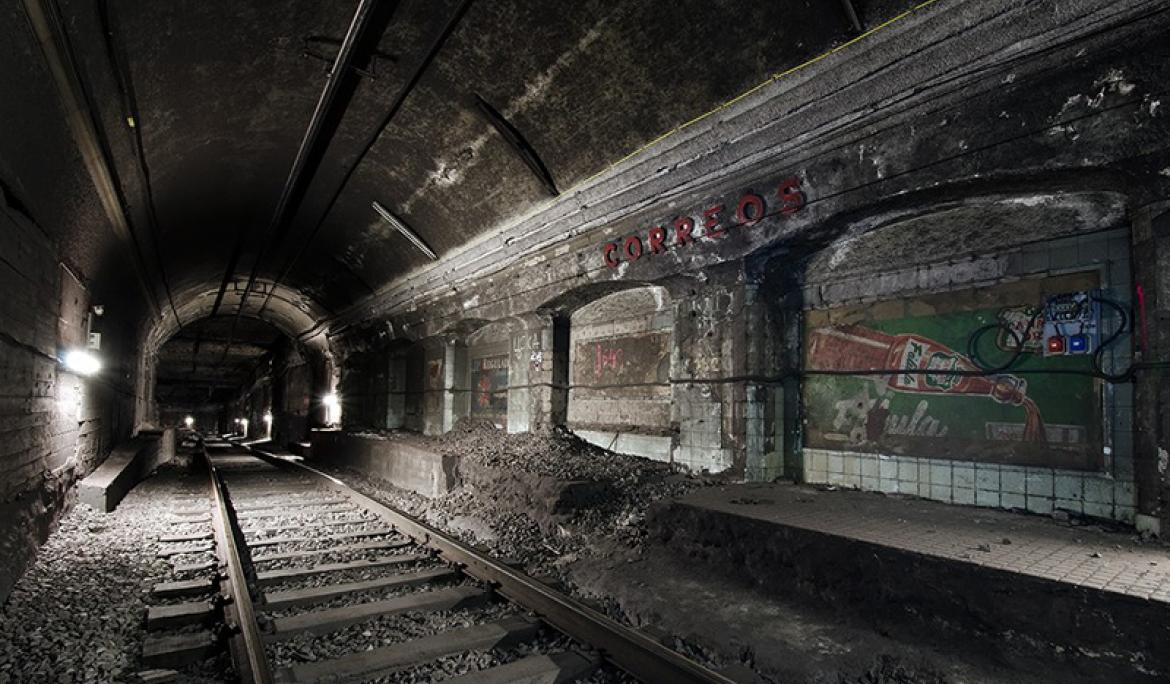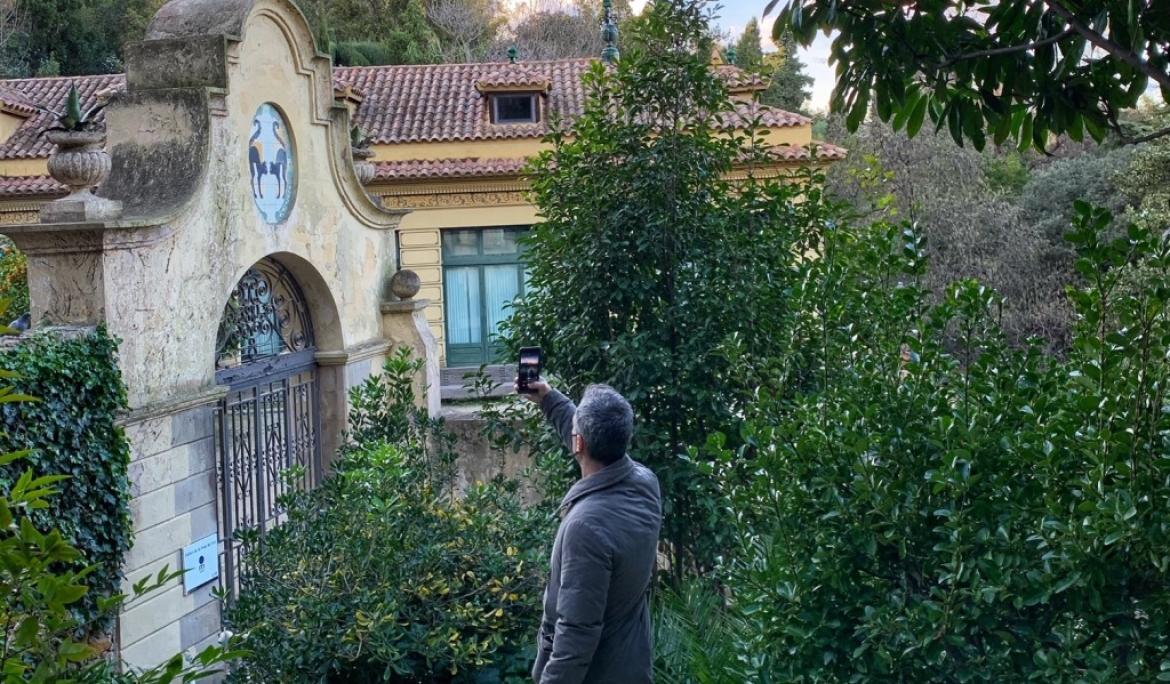Barcelona still keeps some secrets reserved only for the most intrepid travellers. Some of them are found in the heart of Barcelona and others in little-known corners. Whatever their location, we recommend getting around with your Hola Barcelona Travel Card. Are you ready to discover them?

Barcelona is one of the most visited destinations in the world. Before the pandemic, the city every year received about 12 million tourists and there are an infinite number of guides explaining its most charming spots.
1. Ghost stations
Barcelona offers extensive public transport options that have been built over several decades.
Thanks to this history, it’s not surprising that a few legends about so-called ghost stations in Barcelona circulate on the Internet, referring to those that have disappeared or gone out of service. An example is the case of the "Correus" station, which was active from 1934 until 1972 and whose sign is still visible between the Jaume I and Barceloneta metro stations.
However, in reality the only true ghost station in the city is the one called "Gaudí", which, despite being fully completed, never hosted passengers. The destiny of this station located under Gaudí Avenue between Rosselló and Provença streets was altered by changes in the last stages of planning of line 2 in the 1960s.
2. Air-raid shelters
The bombings of the Spanish civil war forced the city of Barcelona to build anti-aircraft shelters underground to ensure the survival of its citizens. Most of them were accessible through tunnels at street level. However, there were some privileged buildings that could access them directly from the same block, as is the case of La Pedrera.
Some of the best-known bunkers are the one in Plaça del Diamant and the one named “refuge 307” on Carrer Nou de la Rambla, which are 250 and 400 metres long respectively, and where rooms such as bathrooms or an infirmary can still be seen.

3. New York in Barcelona
The Arús library in Barcelona is part of the city’s history thanks to its 125 years of age and over 80,000 books. Currently, it’s a research centre that specialises in contemporary social movements, with a special bibliography on the labour movement, anarchism and Freemasonry.
Still, its mystery has little to do with its books. At its entrance is the most famous symbol of New York: the Statue of Liberty, although of course this original 19th-century piece in bronze by the Barcelona sculptor Manel Fuxà is of smaller dimensions.
4. Remains of the Civil War in Plaça Sant Felip Neri
The captivating and quiet Sant Felip Neri square in the Gothic Quarter is also marked by the ravages of the Civil War. The façade of the church of the same name as the square is pierced from the impact of shrapnel from a bombing by the Francoist side in 1938 during the taking of Barcelona, and which caused the deaths of 42 people.
After these events, it was decided not to restore the façade to preserve the historical memory of the war and its victims.
5. Football in the Basilica
The Basilica of Santa Maria del Mar is an essential work of architecture that has inspired great names in literature such as Ildefonso Falcones, on "The Cathedral of the Sea" and Carlos Ruiz Zafón on "The Angel’s Game".
What is perhaps less noticed by many is that the Barça crest is camouflaged in one of its colourful stained glass windows. This is because the team’s leadership financed much of the restoration of the stained glass windows after the fire that damaged the basilica at the beginning of the civil war.
6. An exclusive restaurant in a gift shop
There’s an emblematic gift shop near La Pedrera that’s full of colour and Spanish folklore. The curious thing about this store is that behind its façade is one of the most exclusive Asian restaurants in Barcelona: the Chi-Tón. It’s an essential visit for lovers of gastronomy and hidden spots.
7. Street art
Walking through the streets of Barcelona is always a good experience, but if you add exquisite works of urban art to these walks, they become something truly unique.
Some of the most photographed of these pieces are "El món neix en cada besada" (2014), by Joan Fontcuberta, located a few metres from the cathedral, "Mural G-333" (1998) by Eduardo Chillida and "Todos juntos podemos parar el sida” (1989) by Keith Haring, both at Plaça dels Àngels.
8. A fountain that inspires
Barcelona is, without a doubt, a city that has inspired hundreds of artists. Now it’s time to talk about the Font del Gat, sculpted by Antoni Homs and located in the Laribal gardens, on the mountain of Montjuïc.
The interesting thing is that these gardens were a popular country meeting place in the early 20th century. From there, the musician Joan Amich composed the popular song "Baixant de la font del gat" in 1922, which propelled the fame of the fountain until it became a symbol of the city's folklore.
In addition to this piece of popular history, the Laribal gardens are among the most beautiful and emblematic, and reaching them can be an unforgettable experience thanks to the panoramic views offered by the Montjuïc Cable Car.

9. The unknown patron saint of Barcelona
Continuing with the charms of the mountain of Montjuïc, we find a small chapel built in 1402 within the Palauet Albéniz. Concealed within the chapel is the history of the forgotten patron saint of Barcelona: Saint Madrona, to whom she owes her name.
The story goes that Santa Madrona was a Christian from Barcelona who was martyred in Thessalonica. Some time later, merchants transporting their relics to Marseilles had to take refuge in the port of Barcelona due to a heavy storm, and each time they tried to set sail again to their destination, they ran into the rain. The merchants interpreted this as the saint's desire to stay in her hometown, and in 1563 she was declared the patron saint of Barcelona.
10. Casa Vicens, a Gaudí gem away from the hustle and bustle
The Gràcia neighbourhood has an unexpected Antoni Gaudí gem among its charming streets.
On Carolinas street, number 24, stands the Casa Vicens, a building that belongs to the architect's Orientalist period, which was marked by strong Asian, but also Islamic and Hispanic influences. The curious thing about this space is that it tends to go unnoticed by many of the city's visitors, so it’s a great opportunity to admire one of the first works of the famous Catalan architect with absolute peace and quiet.

